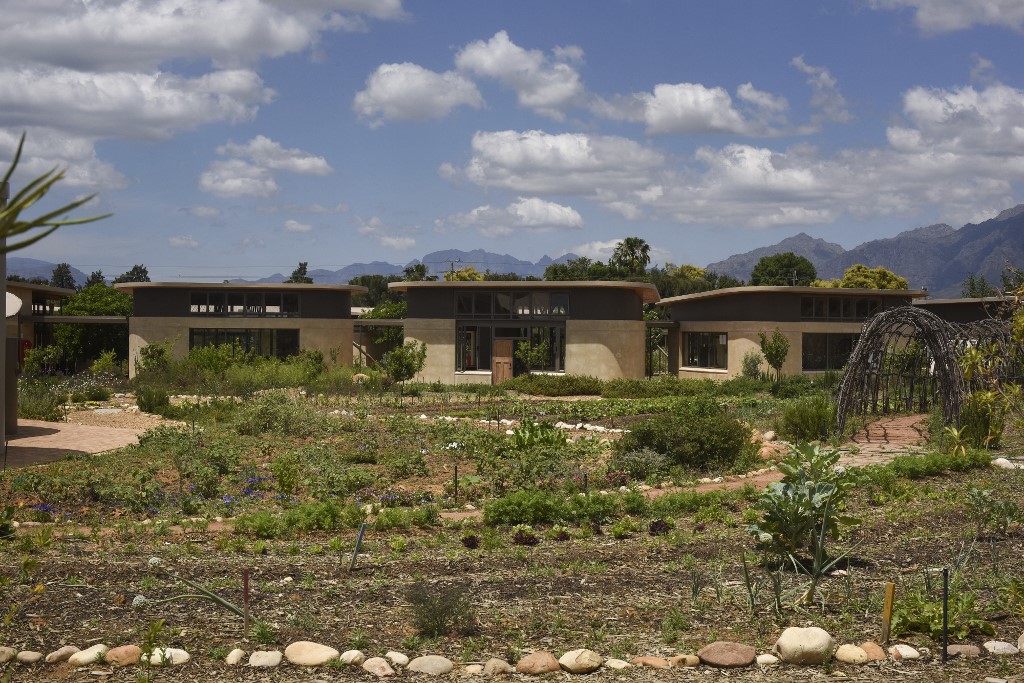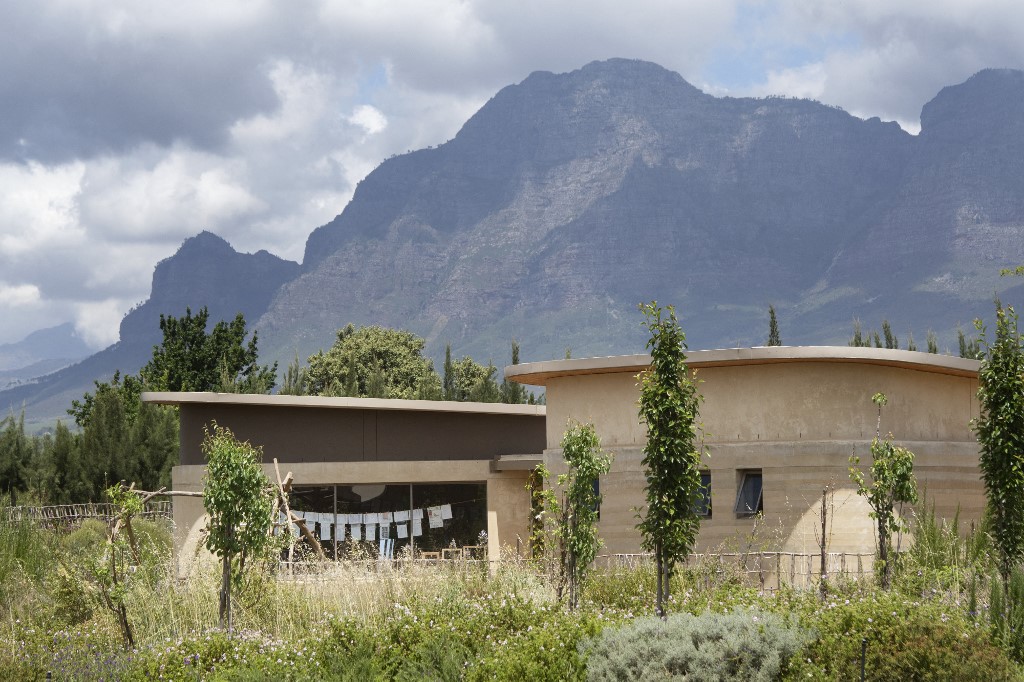by Gersende RAMBOURG
Agence France Presse
Paarl, South Africa (AFP) — The sound of chirping birds drowns out the noise of passing cars near a school on the southern tip of Africa, where pupils plant cabbages, mix compost and climb trees.
South Africa’s first “green school” aims to raise a new generation of environmentally-conscious citizens, fostering children’s creativity and resilience in the face of climate disruption.
Founder Alba Brandt, said she came up with the idea in 2017 after spending six months at a similar initiative in Bali, Indonesia, for what was supposed to be a family adventure with her husband and three daughters.
“It changed our whole lives,” said the 44-year-old ex-accountant sporting a pair of Bermuda shorts and a coral hoodie, her hair pulled up in a loose bun.
“I realised there was so much more to education than to sit still, in your uniform, be quiet and regurgitate what is written on the blackboard,” she told AFP of the school, located about 60 kilometres (37 miles) from Cape Town.

Unlike most other South African schools, uniforms are not required at this institute nestled in a privileged corner of the country, rich in plant life and vineyards.
– Butterflies and basil –
The school, which opened last year, is built on a former horse paddock, where the “land was dead, trampled”, said Brandt.
“We started planting two years ago, with endemic plants, no chemicals. And biodiversity returned, butterflies and bees… and porcupines.”
Snakes are also known to hide in some bushes where children know they should not play on hot southern spring days.
The school grounds boast playgrounds with swings, huts and sandboxes, while the canteen’s zero-waste kitchen serves only vegetarian meals.
When AFP visited, the menu advertised three different salads garnished with fresh basil from the school’s garden.

Classrooms have large windows, allowing for ample natural light.
Solar panels supply electricity and a system of underfloor water pipes provides air-conditioning.
The school serves all grade age groups from nursery school to secondary, with about 170 pupils currently enrolled.
Classes are small, with twenty pupils and two teachers.
Teaching is bilingual, in English and Afrikaans, reflecting regional demographics and follows a thematic approach, with the topics studied across subjects.
“Take life on mars for instance,” said principal Andrew Wood. “We will discuss science fiction in literature, maths, astronomy, gravity in physics,” he explained.
“There should be a coherence to what they’re learning”
– ‘Think critically’ –
The “Green School” is not about “downloading contents” into pupils’ brains, but wants them to “think critically” in line with 21st century learning skills, said the 62-year-old educator.
“This is how I used to teach behind closed doors at my old school, now I can share with parents,” said primary school teacher Esbie Binedell, laughing. “It’s somewhat messy, (but) we would dig into a subject matter until the children were done with questions”.
Fees are relatively high and the government provides no funding. A scholarship system is being planned but will take time.
Brandt said she hoped the school’s teaching would help create a more resilient community.
The school’s founder said it was not enough to be “the quirky mum who recycles and makes homemade food”.
“You can drive that alone but it’s hard and probably not successful.
“Community is so much stronger”.
Despite the environmental focus, teachers opt for a light touch when discussing the ravages of global warming.
“We introduce problems very slowly, to avoid anxiety and ecophobia. Mostly with the older kids. We start with problems the size of a village, then a town, then a whole country, progressively,” said Brandt.
The green school, with its progressive agenda and innovative approach, above all seeks to arm students with the tools to think critically while developing their creativity.







